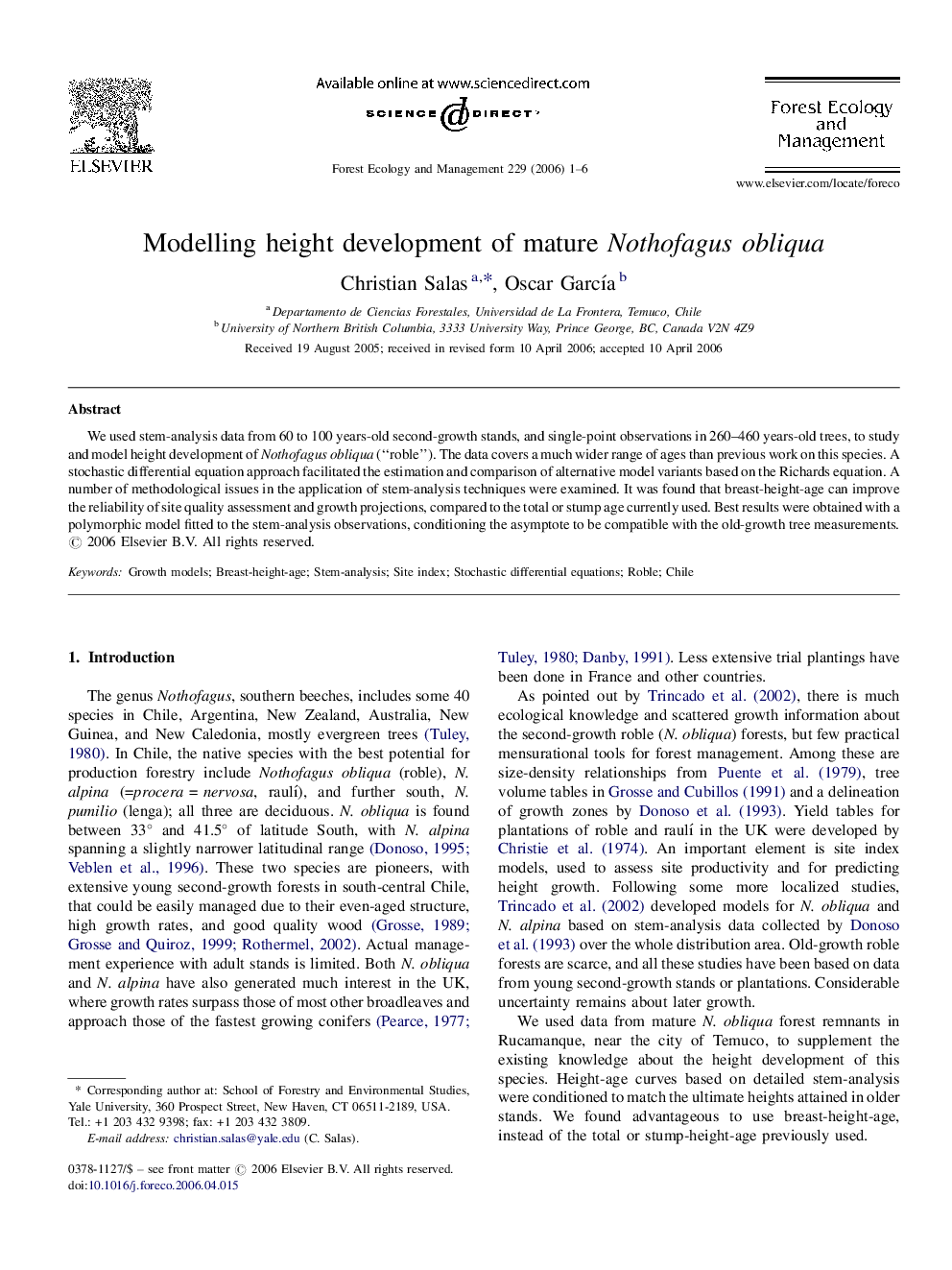| Article ID | Journal | Published Year | Pages | File Type |
|---|---|---|---|---|
| 90819 | Forest Ecology and Management | 2006 | 6 Pages |
We used stem-analysis data from 60 to 100 years-old second-growth stands, and single-point observations in 260–460 years-old trees, to study and model height development of Nothofagus obliqua (“roble”). The data covers a much wider range of ages than previous work on this species. A stochastic differential equation approach facilitated the estimation and comparison of alternative model variants based on the Richards equation. A number of methodological issues in the application of stem-analysis techniques were examined. It was found that breast-height-age can improve the reliability of site quality assessment and growth projections, compared to the total or stump age currently used. Best results were obtained with a polymorphic model fitted to the stem-analysis observations, conditioning the asymptote to be compatible with the old-growth tree measurements.
